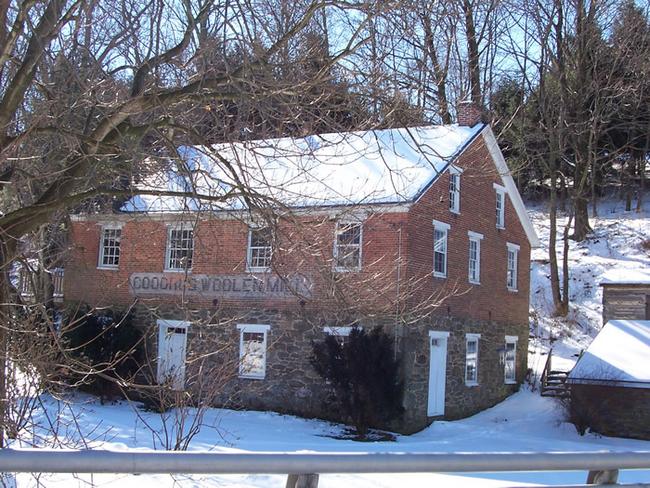
Codorus Woolen Mill
York Co. | Pennsylvania | USA
Watersource: East Branch of West Branch Codorus Creek.
Codorus Woolen Mill
Located on Pa 216 north of Glenville at Wool Mill Rd.

The mill was built in 1790 and made blankets during the Civil War for Union soldiers.
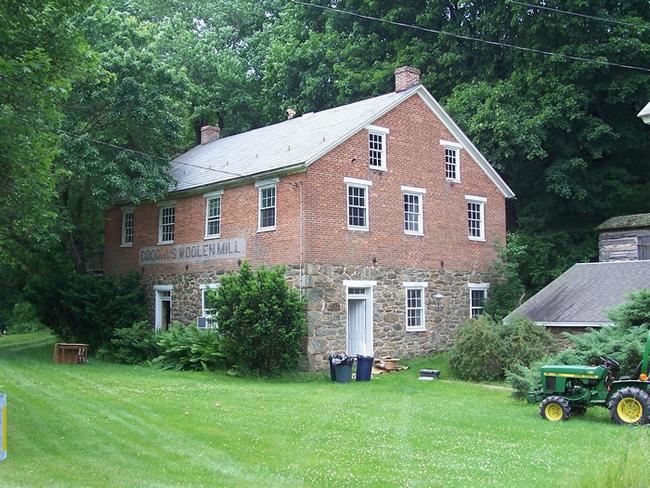
Today, in 2007, the mill structure is a workshop with an apartment above. Some signs of the old millrace still exist.
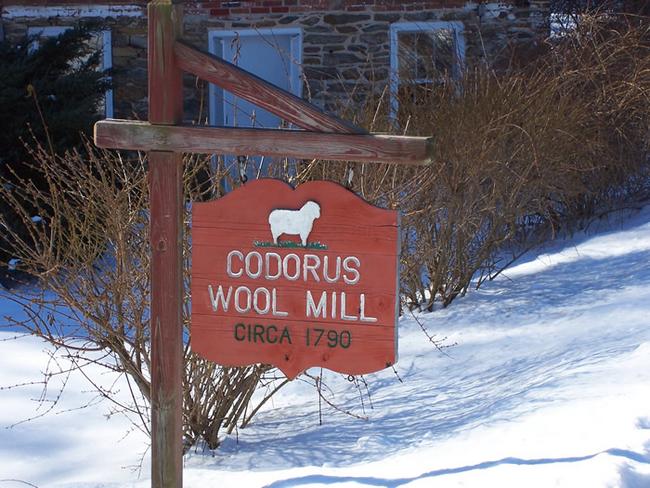
The sign along Pa 216 at the Woolen Mill and miller's house complex.
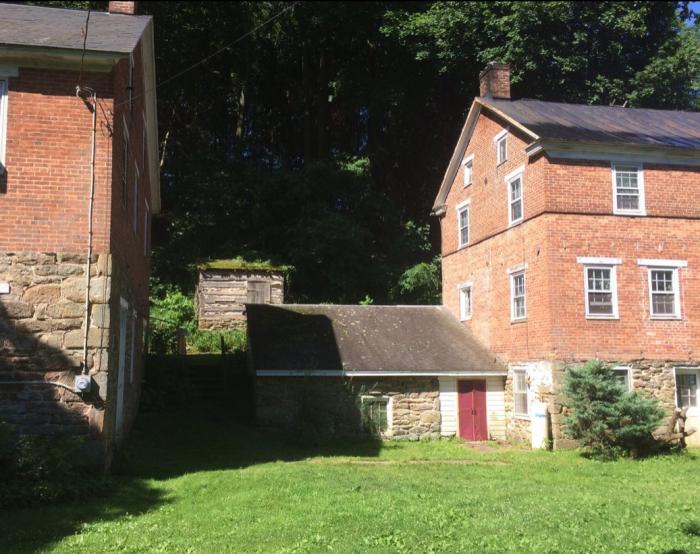
Spring house and smoke house.
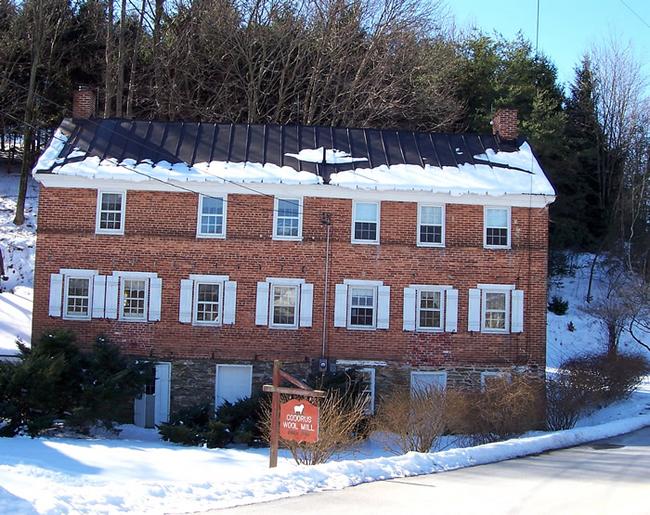
The miller's house was renovated into a home in 2004.
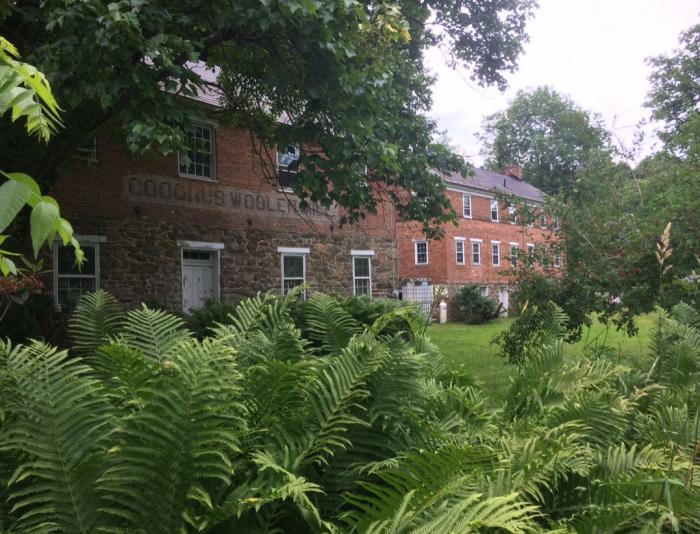
The Codorus Woolen Mill near the tiny hamlets of Brodbeck and Glenville, Pennsylania, in southern York County was established in 1790. It operated for more than a century. By c.1972, it had been renovated by Pat and Salley Thorn. In 1976 it was purchased by Charles and Carol Bell of Baltimore. The historic property includes the mill building, owners house, barn, spring house and smoke house. It served as a family gathering place for multiple generations of the Bell family for three decades.During the American Civil War, the mill owner had a contract to supply woolen blankets to the Federal government for the Union Army.The woolen mill drew its water from the West Branch of the Codorus Creek. Traces of the old mill race may still be seen. In 1899, the mill is mentioned in the Tenth Annual Report of the Factory Inspector of the Commonwealth of Pennsylvania as still producing blankets as its primary product line.While Confederate cavalry patrols were active in southern York County during the Gettysburg Campaign, there is no evidence that they ever visited this particular mill. However, flour mills across the region were primary targets of foragers, who filled wagons and haversacks with fresh ground meal and flour. Had it been known that this mill was used for military purposes, it may have been torched. Southern troops burned several warehouses and railroad cars in Chambersburg and en route from Gettysburg to York when they learned they were filled with supplies for the Union army.